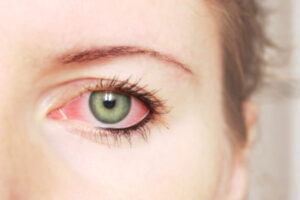What is Hay Fever Washington DC?
 What is hay fever Washington DC? Hay fever is a very common term used to describe a condition which affects the nose and eyes. It is a misnomer as the condition is not usually caused by hay and there is no fever. The technical term used is “allergic rhinitis” when it affects only the nose. It is called “allergic rhinoconjunctivitis” when it involves the nose and the eyes. The suffix “itis” denotes inflammation of the tissues or organs. Inflammation can result from either infections, allergies, and/or autoimmunity (i.e., our defense systems working against our own organs). Hay fever refers only to allergic inflammation.
What is hay fever Washington DC? Hay fever is a very common term used to describe a condition which affects the nose and eyes. It is a misnomer as the condition is not usually caused by hay and there is no fever. The technical term used is “allergic rhinitis” when it affects only the nose. It is called “allergic rhinoconjunctivitis” when it involves the nose and the eyes. The suffix “itis” denotes inflammation of the tissues or organs. Inflammation can result from either infections, allergies, and/or autoimmunity (i.e., our defense systems working against our own organs). Hay fever refers only to allergic inflammation.
“Allergy” is a phenomenon which results when our defense mechanisms (i.e., immune system) mistake innocuous substances as potentially harmful and mount an attack on them. The end result is inflammation which causes excessive secretions, swelling, and/or redness of tissues as well as discomfort. The exact cause for this false identification is not clearly known, but genetic factors are thought to play a role.
Ten of thousands of people suffer from and wonder: What is hay fever in Washington DC? The common symptoms of hay fever in Washington DC may include sneezing, itchy nose, runny nose, nasal congestion, post-nasal drip, sore throat, itchy throat, itchy eyes, watery eyes, red eyes, sinus congestion, sinus pressure, headaches, snoring, and fatigue. Nasal congestion can cause difficulty in breathing through the nose which can be very annoying to the allergy sufferer. More severe manifestations may include cough, recurrent sinus infections, and symptoms of asthma (e.g., wheezing, chest tightness, shortness of breath). Sneezing paroxysms, constant runny nose and red, itchy eyes can interfere with school and work performance and negatively impact one’s quality of life.
Hay fever in Washington DC can affect people seasonally or year-round. Spring and Fall are the more common seasons causing hay fever in Washington DC. Pollen from trees and grasses are the usual triggers in the Spring for hay fever in Washington DC. Birch, maple, oak, elm, hickory, beech and cedar are some of the trees that pollinate in the Spring in Washington DC. The tree pollen season in Washington DC usually begins in late February to early March and ends in late May. Timothy, fescue, Kentucky Blue grass, and Bermuda grass are some of the common grasses that pollinate in Washington, DC. The grass pollen season usually begins in late April and ends in early July. Ragweed is the predominant weed that causes hay fever symptoms in the Fall in Washington DC. The weeds begin pollinating in the middle of August, peak around the Labor Day weekend and taper off in late October with the first frost in Washington DC.
The pollen counts are usually highest on dry and windy days causing hay fever in Washington DC. A few precautions such as avoiding outdoor activities on high pollen days, closing the windows to keep the pollen out, and showering before going to bed can minimize the misery from pollen-induced hay fever in Washington DC.
Certain outdoor molds can also cause hay fever in Washington DC. Spores from the molds are airborne and exposure to the nose and eyes can trigger hay fever in Washington DC. Mold spores are highest on humid days. Molds usually grow on wet and decaying leaves in Washington DC. Dust mites are common indoor triggers of allergic rhinitis symptoms as well. Reducing the indoor humidity to less than 50% and encasing pillows and mattresses in dust mite proof covers will reduce exposure to the exoskeleton and droppings from dust mites and thus reduce hay fever symptoms in Washington DC.
If the symptoms are mild, proper environmental controls and over-the-counter medications can offer relief. Sometimes prescription medications are needed if the symptoms are more severe. If the relief is not adequate, allergen immunotherapy i.e., (allergy shots) provides long term relief from hay fever in Washington DC, by reducing the sensitivity to allergy-causing substances (i.e., allergens).
The board-certified allergy specialists at Black & Kletz Allergy treat both pediatric and adult patients and have done so for more than 5 decades. So if you have been asking, “what is hay fever Washington DC?, you have come to the right place. We have offices in Washington DC, McLean VA (Tysons Corner VA), and Manassas VA. We offer on-site parking and our Washington DC and McLean VA offices are Metro accessible. If you or someone you know is bothered by hay fever symptoms, please make an appointment at one of our convenient locations in the Washington DC metropolitan area by either calling us directly or requesting an appointment on our website. The allergists at Black & Kletz Allergy would be happy to help you diagnose and treat your unwanted allergy symptoms to improve your quality of life.












